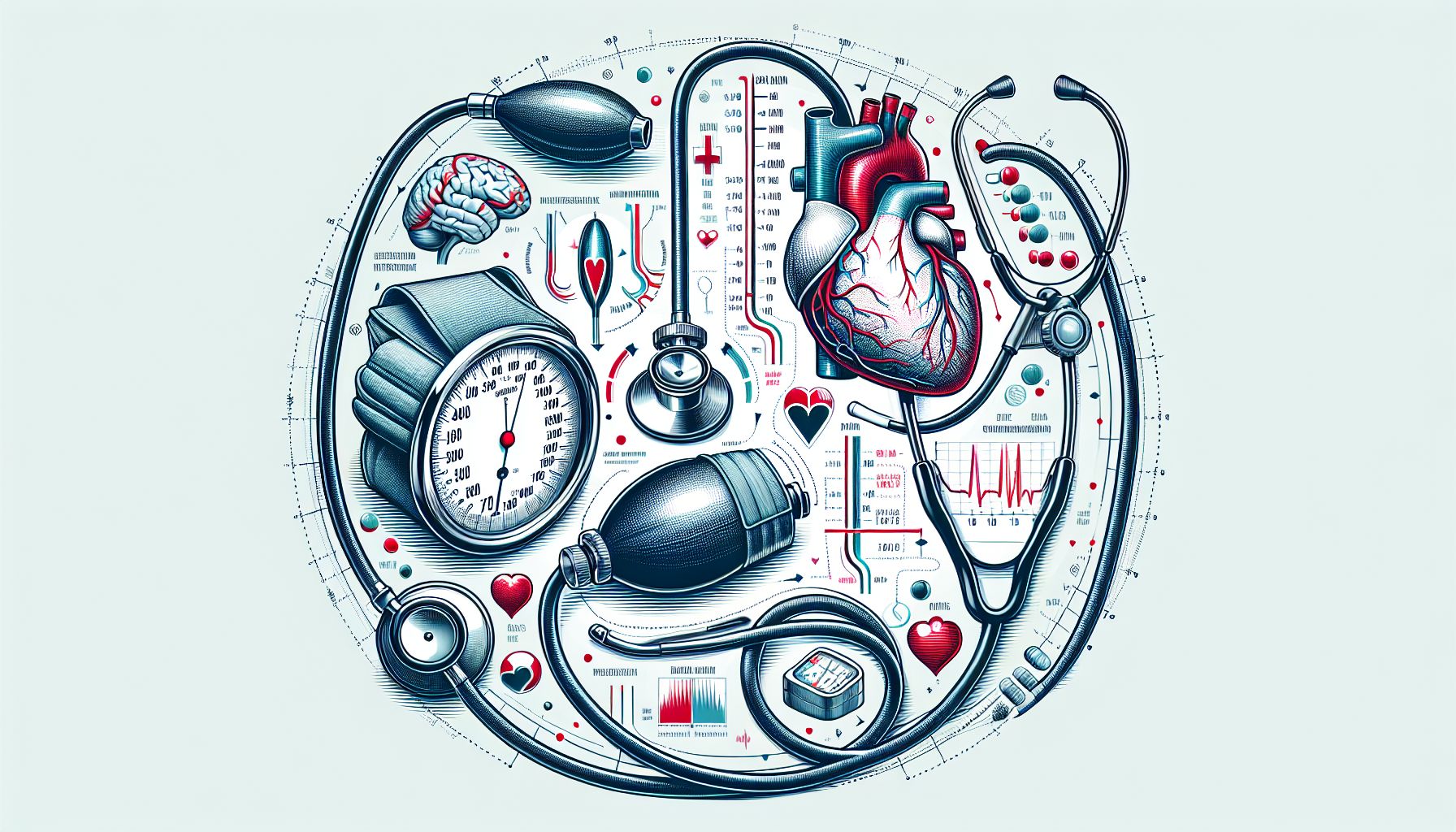
What is Blood Pressure?
Blood pressure is a critical indicator of health, reflecting the force of blood pushing against the walls of your arteries as your heart pumps blood. It’s measured in millimeters of mercury (mmHg) and expressed in two numbers: systolic pressure (the higher number) and diastolic pressure (the lower number). A normal blood pressure reading is usually around 120/80 mmHg.
How Blood Pressure Works
Your heart acts as a pump, circulating blood throughout your body. The systolic pressure represents the force exerted when the heart beats, while the diastolic pressure measures the pressure in the arteries between beats. Consistent high blood pressure, or hypertension, can lead to significant health issues such as heart disease and stroke.
Measuring Blood Pressure
Blood pressure is typically measured using a sphygmomanometer, which consists of a cuff that’s inflated around your arm and a gauge that records the pressure. It’s important to measure blood pressure regularly, as it can fluctuate based on various factors including stress, diet, and physical activity.
Significance of Blood Pressure Monitoring
Monitoring blood pressure is crucial for early detection of potential health issues. Hypertension often presents no symptoms, earning it the nickname “the silent killer.” Regular checkups with healthcare professionals are essential for maintaining cardiovascular health.
Causes of High Blood Pressure
Several factors contribute to high blood pressure, including genetics, obesity, lack of physical activity, excessive salt intake, and stress. Understanding these causes can help in managing and preventing hypertension.
Managing Blood Pressure
Lifestyle changes are the first line of defense in managing blood pressure. This includes adopting a healthy diet, regular exercise, reducing salt intake, and managing stress levels. In some cases, medication may be prescribed by healthcare providers.
Common Medications for Hypertension
There are several classes of medications used to treat high blood pressure, including:
– ACE inhibitors (e.g., Lisinopril): Help relax blood vessels.
– Beta-blockers (e.g., Atenolol): Reduce heart rate and the heart’s workload.
– Diuretics (e.g., Hydrochlorothiazide): Help the body eliminate excess salt and water.
– Calcium channel blockers (e.g., Amlodipine): Relax blood vessels and reduce heart workload.
Each medication has specific indications, mechanisms of action, and potential side effects that should be discussed with a healthcare provider.
Possible Side Effects of Blood Pressure Medications
While blood pressure medications are generally safe, they can cause side effects such as dizziness, headache, fatigue, or swelling. It’s important to consult healthcare providers about any adverse effects experienced.
Expert Recommendations
Dr. Jane Smith, a renowned cardiologist, advises, “Regular monitoring and lifestyle modifications remain the cornerstone of blood pressure management. Medications are effective but should be tailored to individual needs after consulting with healthcare professionals.”
Infographic: Blood Pressure Management Tips
– Eat a balanced diet rich in fruits and vegetables.
– Exercise regularly, aiming for at least 150 minutes of moderate activity per week.
– Limit salt and alcohol intake.
– Manage stress through relaxation techniques like yoga or meditation.
– Monitor your blood pressure regularly and keep a record.
Conclusion
Understanding and managing blood pressure is essential for long-term health. By staying informed and proactive, you can prevent potential complications related to hypertension. For more personalized advice and treatment options, visit our site: Learn More About Blood Pressure Management.
